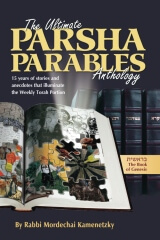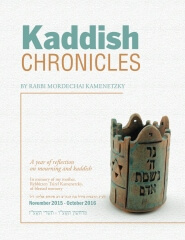
There is a common denominator among three prominent vessels that are conspicuously placed in the Mishkan. The Aron Kodesh that contains the Holy Luchos known as The Ten Commandments; the Mizbeach HaZahav, the Golden Altar of Incense; and the shulchan all have one aspect in common. They each are adorned with a “zair zahav” a gold crown that surrounds each vessel. The Jews are first told to make an Ark. “You shall cover it with pure gold, from within, and from without shall you cover it, and you shall make on it a gold crown all around” (Exodus: 25 11).
When they are told to build a golden altar for the incense offering, they are also commanded to make a crown around it. In reference to that altar, the Torah commands: “You shall cover it with pure gold, its roof and its walls all around, and its horns, and you shall make for it a gold crown, all around (Exodus 30:3).But when they are commanded to make the shulchan, the table that holds the lechem hapanim, the showbread, the order to make a crown takes on a different meaning. The Torah calls it more than a crown; it is called a guard.
“You shall make a table of acacia wood, two cubits its length, a cubit its width, and a cubit and a half its height. You shall cover it with pure gold, and you shall make for it a gold crown all around.” The Torah reiterates the command to make a crown, but this time it uses a word that personifies the function of the crown “umisgarto saviv.”
“You shall make for it a border of a handbreadth all around, and you shall make a gold crown to guard it all around” (Exodus 25:25). The crown is more than an ornament for the shulchan; it is a border that embodies the Table.
Why is the crown designated for the shulchan different than the crown that adorns both the ark and the altar? Why does the shulchan need a crown to serve as border, a guard, a misgeres, more than the other vessels?
Reb Dovid of Lelov, a student of the Seer of Lublin, once came to Zelin to visit his friend Rabbi Dovid of Zelin. Hearing that the rabbi of Lelov was visiting him, the Zeliner Rebbe beseeched his wife to bake something special. Alas, the poverty of the couple was dire, and the poor Rebbitzin only had some flour and oil, which she made into biscuits.
Upon his first bite, the Rebbe exclaimed in earnest, “These cakes are truly exceptional!”
Knowing the source, the Rebbitzen dismissed the compliments of the bland and meager cakes as an appreciation of the effort. Weeks later, the Rebbitzen of Lelov met the Rebbitzen of Zelin. “You must tell me how you made those biscuits that you served my husband. I have never heard him get excited about food before, yet he did not stop praising the biscuits he ate in your home!”
The Zelin Rebbitzen answered meekly. “There was no recipe. When I heard that the Tzadik of Lelov was coming I realized that I had nothing to serve. Hashem knows that had I the means I would have made him a feast. But, alas, I could not. So I asked him to bestow His great goodness and the flavor of Gan Eden in the biscuits!” “Your prayers were answered,” said the Rebbitzen of Lelov. “He said that they had the taste of Gan Eden!”
The Torah tells us that the Ark, which represents the Torah, should have a crown. When one learns Torah, he creates a crown that surrounds the Ark. The Altar, which represents service of Hashem, has a crown, too. Those who serve Hashem properly merit a crown. It is the crown of avodah.
But when it comes to the table, when it comes to the world of bread and butter, the mundane matters of life, the crown serves a different purpose. The crown of majesty turns a table into a Holy Shulchan! It guards it, surrounds it and ensconces it with an aura of spirituality that converts a simple, mundane meal into a holy feast. That crown is more than an adornment. The Torah calls it a misgeres, a guard, which turns our food from the ordinary into morsels flavored and seasoned by the Almighty.
Rabbi Shaul Kagan, of blessed memory, Rosh Kollel of Pittsburgh, disliked hearing Jews say, “I am going to a party.” “Yidden don’t party!” he used to exclaim. “They gather, they rejoice, and they celebrate in the boundaries of the crown of the Almighty. A royal table should not only be set. It should be crowned! Good Shabbos © 2000 Rabbi Mordechai Kamenetzky
Dedicated by Hedy & Ben Lipschitz and family in memory of Ruth Gleicher (Chaya) Rivka Bas HaRav Yoel o”bm
Condolences to the Bennet, Neuman, and Kest Families upon the loss of Ahron ben Yissochor Benet ob”m
Best wishes to the Berkowitz boys of Baltimore at juno.com
If you would like to be on a shiur update list which sends messages regarding Rabbi Mordechai Kamenetzky’s various lectures in NY City and Long Island and other locations, please send a blank email to [email protected] You will receive bulletins about those classes.
If you want to be on a shiur announcement faxlist, fax request along with your fax number (dedicated line, please) to 516-569-7954
Copyright © 1998 by Rabbi M. Kamenetzky and Project Genesis, Inc.
If you enjoy the weekly Drasha, now you can receive the best of Drasha in book form!
Purchase Parsha Parables – from the Project Genesis bookstore – Genesis Judaica – at a very special price!
The author is the Dean of the Yeshiva of South Shore.
Drasha is the e-mail edition of FaxHomily, a weekly torah facsimile on the weekly portion
which is sponsored by The Henry and Myrtle Hirsch Foundation
Books by Rabbi Mordechai Kamenetzky:
 |
 |


